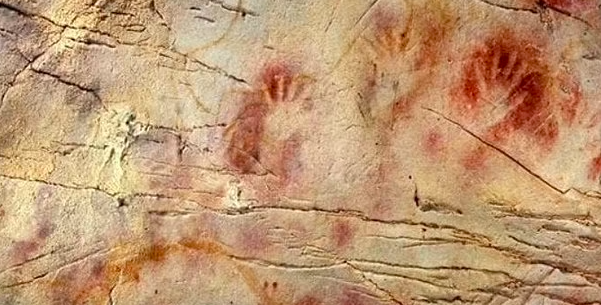MUCH modern art may look a little sketchy to the untrained eye.
But new research has found that some of the world’s earliest known art may also be child’s play.
The experts from Cambridge University and Spain’s University of Cantabria found that children or even toddlers may have been behind up to a quarter of prehistoric rock art.
Researchers analysed hand stencils painted in Spanish caves some 20,000 years ago.
After studying 180 examples of art involving outlines of hands that were made by blowing pigment through a hollow reed or bone, scientists believe that ancient rock painting was actually a family-oriented group activity, not a solitary male pursuit.
The study, published in the Journal of Archaeological Science, revealed that between 20% and 25% of the hands were made by children aged between 2 and 12 years old.
Researchers studied art in five caves across Spain – El Castillo, Maltravieso, Fuente de Salin, Fuente del Trucho, and La Gama.
Lead author of the study, Veronica Fernndez-Navarro said because the prehistoric images were made by blowing pigments through a hollow reed or bone onto hands placed against the cave wall, the process that would have made the outlines slightly larger than the hands themselves.
She said: “From the real hand to the one on the wall there are always a few centimetres of error, because the silhouette comes out larger.
“We calculated that error and many more children’s hands came out than we expected.”
She added: “It would appear that artistic activity was not a closed activity closely linked to male individuals and the survival of the group, as had been thought until now.”
READ ALSO:
- Writing in Spain: How author Barbara Lamplugh left behind a life in the UK
- Neanderthals were world’s first artists, concludes study of prehistoric cave paintings in southern Spain
- Pigments of the imagination: Why you should be seeking out caves in southern Spain this summer
Click here to read more Spain News from The Olive Press.








